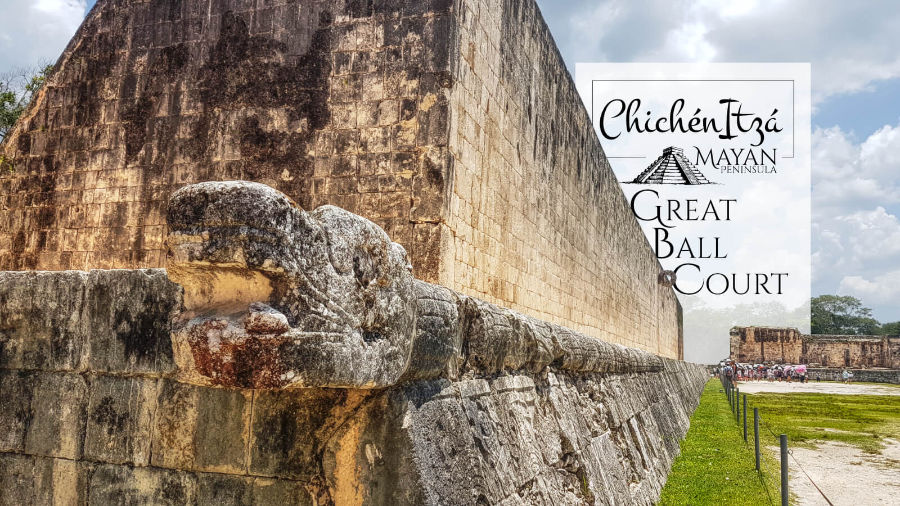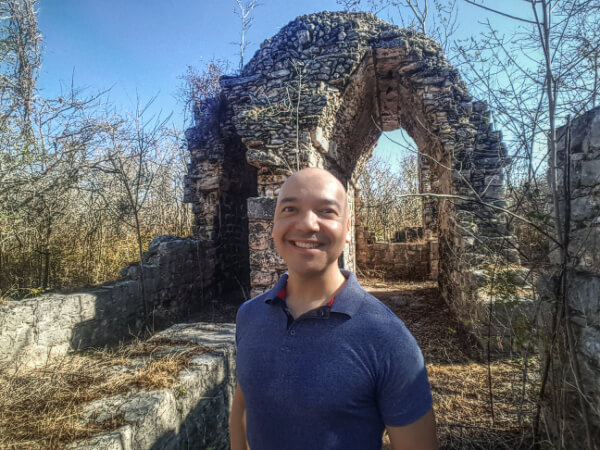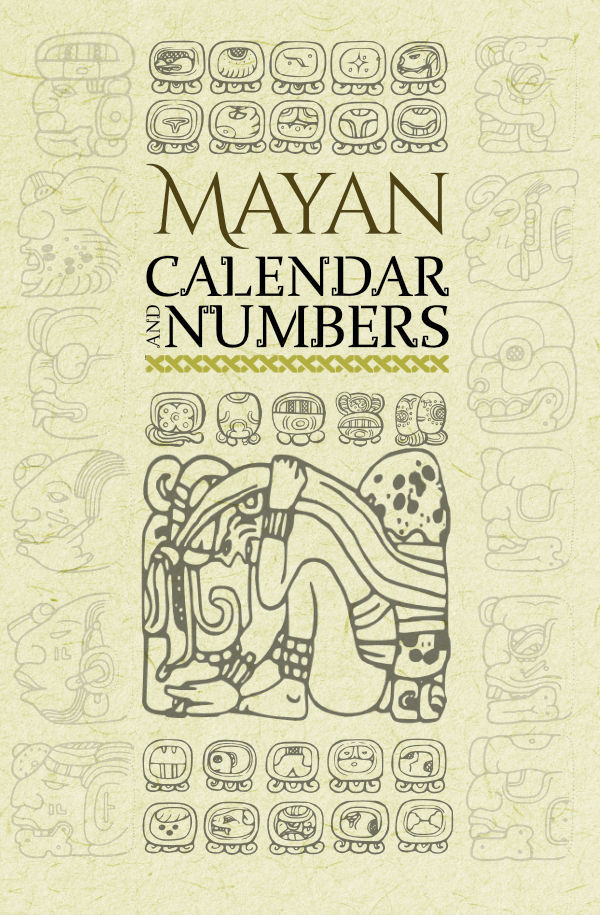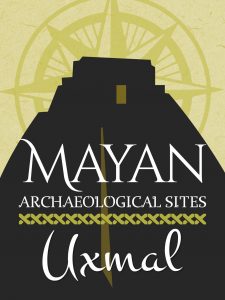The Great Ball Court in Chichen Itza shows the arrival and development of the Itzá people, the evolution of religious ideas, and a style called “Maya-Yucateco” because it’s mixed with elements of the original Puuc zone. This style combines architecture, sculpture, and painting in function of militarism and the cult of Kukulkan, which began to spread towards the Mayan region in the Classic period, producing a rebirth of culture and society in the lands of Yucatán.
The Great Ball Court rests on a platform that supports the pyramid and the other structures. These types of ball courts were a common feature of a remarkable ritual practiced among the Mesoamerican societies. Here it received the name of “
This specific court exhibits very interesting acoustics like a conversation at one end can be heard 135 m away at the other and like in many other buildings not only in Chichen Itza, a clap produces multiple loud echoes.
Chichen Itza Great Ball Court’s side panels
The central panels of the sidewalks show a procession of warrior ball players, seven on each side of a skull-shaped circular central motif, a symbol of death. First of the group on the right is beheaded, with one knee on the ground and out of his neck comes the blood in the form of serpents. The first of the group on the left is the one making the sacrifice, carrying a knife in one hand and the head of the beheaded in the other.
All the characters are richly dressed; with large and precious feathers on their helmets and behind their backs, cap earmuffs and bar nose rings, arm protectors, wide belts like palms in front of them, knee pads, precious discs behind the waistband, sandals with heel, kilt, pectorals in the shape of a cut neck, zoomorphic insignias that carried in their hand, zoomorphic helmets, etc. The whole composition is full of floral motifs, vegetable branches, etc., to fill in the gaps between the characters.

Of course, this scene of the beheading of one of the players is related to human sacrifice, perhaps in relation to the fertility of the earth, water and sun, as well as with
The Ball Game itself, with its panels decorated in bas-relief, is similar to those found in El Tajin, Veracruz; the realistic snakes that finish the panels at the ends are a symbol of Quetzalcoatl, whose cult originated in Xochicalco. We can conclude that these ideas and people who came to Chichen Itza, began to influence the society and culture of the original Mayans who were settled there.
Physical description of The Great Ball Court in Chichen Itza
The Grand Ball Court has a rectangular plan of 168 m long by 70 wide, it consists of a central corridor or court bounded by two parallel platforms, one in the east and one in the west; the central corridor communicates with two other lateral corridors, one in the north and one in the south, limited by walls that leave four entrances, all this forming the “I” shape, common to other ball games in Mesoamerica.
The platforms are 95 m long with a wide stairway to ascend to the upper part, where there are three small almost square structures, perhaps temples or rooms for priests, judges, players, and people of the nobility, to contemplate the game.

Each platform was composed of a stool decorated with bas-relief panels, one in the center and one at each end, followed by a vertical wall 8 m high, in whose central part was a stone ring, decorated with an entwined feathered serpentine, the symbol of Kukulkan or Quetzalcoatl.
Chichen Itza’s Great Ball Court North and South Temples
The north and south sections of the ball game court, are limited by a medium height wall and by two temple-like constructions. The southern one simply called the South Temple is unfortunately very destroyed.
The North Temple, also known as the Temple of the Bearded Man is of smaller dimensions and has been considered the sanctuary for the excellence of the rites of fertility, associated with the heat of the Sun and the fecundity of the earth.
Chichen Itza’s Great Ball Court Temple of the Jaguar

In the upper and lower parts of the southern side of the eastern face there are two lavish temples; the one above, called the Temple of the Jaguar, looks towards the field and is distinguished by its columns with descending serpents. The lower temple has its facade facing the outside of the court where you can still see a jaguar throne that made sure that at the end of the ceremony the head of the beheaded would be placed on the wall of skulls, or Tzompantli, a construction that bounded on the east to the great building of the court.
Location of The Great Ball Court in Chichen Itza
You can’t miss the Great Ball Court to your left when you first enter this Archaeological Site. My recommendation is to first admire and take some pictures of the Kukulkan Pyramid, and then turn left to visit The Great Ball Court.














